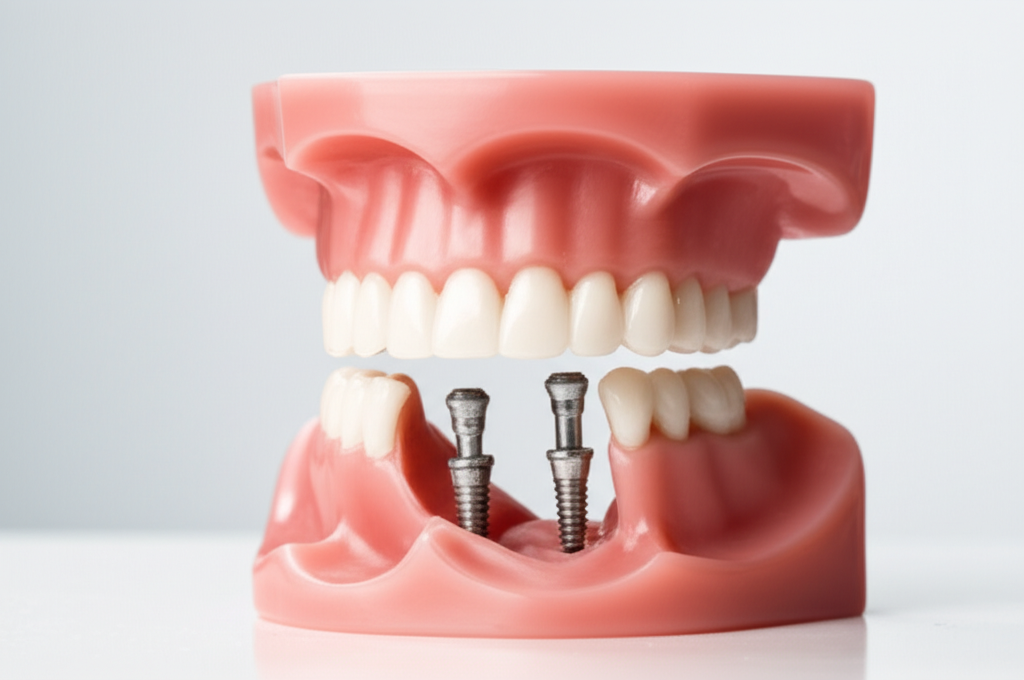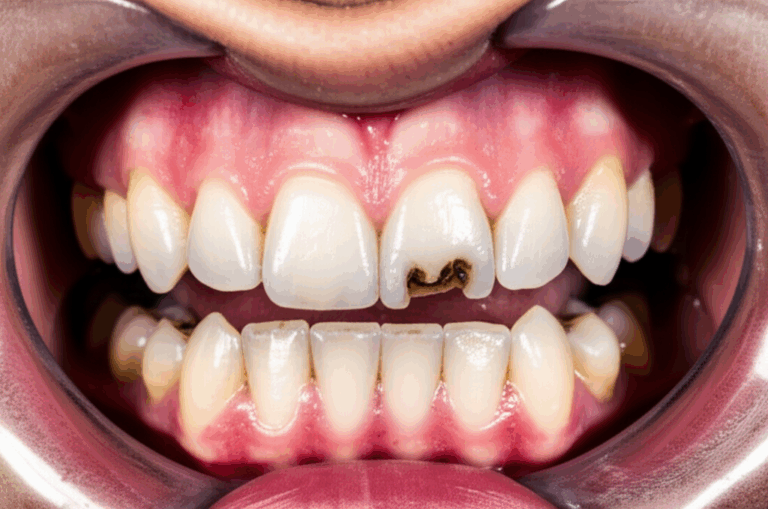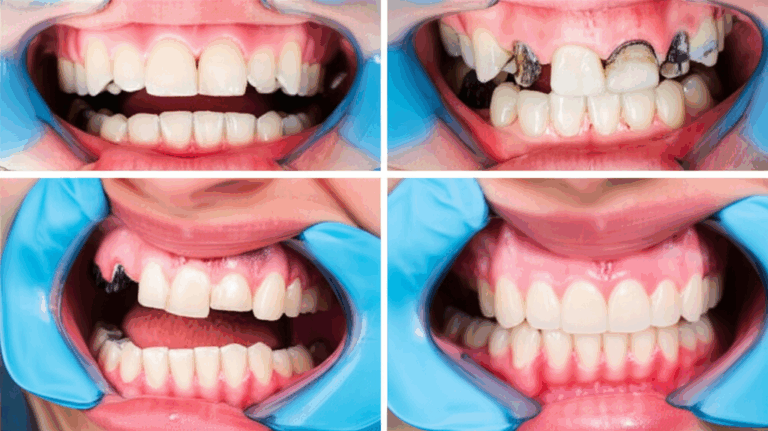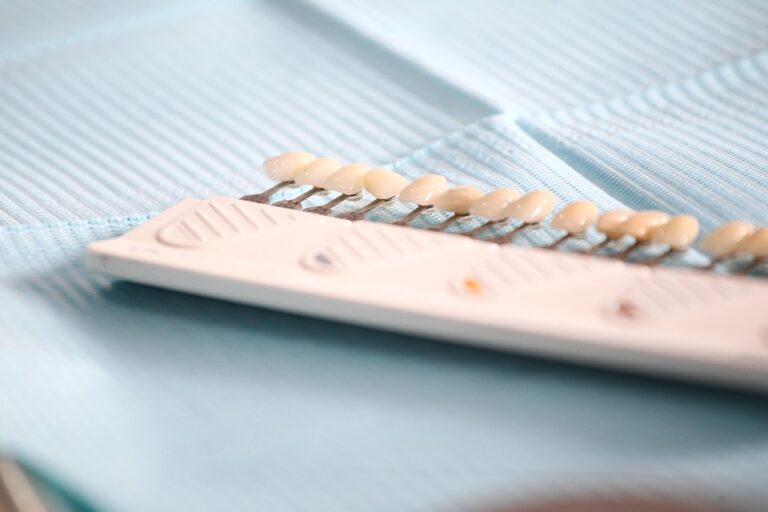
What Are All-on-4 Dental Implants? Your Complete Guide to Permanent Teeth Replacement
All-on-4 dental implants are a new and life-changing way for people who have lost most or all of their teeth to get their smile and bite back. With just four implants in each jaw, you can get a set of new teeth that look and feel real. If you are tired of regular dentures or your teeth are not healthy and you’ve been hiding your smile, this guide is for you. I’ll explain in plain words how All-on-4 works, who can get them, what happens during the treatment, and how they can help you eat, talk, and smile with confidence again.
Table of Contents
Introduction: Why Should You Care About All-on-4?
Let’s be true—living with missing teeth, wobbly dentures, or always having mouth pain isn’t just tiring. It can stop you from smiling, eating what you like, or even talking well. You want something that puts an end to these troubles for good. That’s where All-on-4 dental implants come into play.
These implants offer a tried-and-true, long-lasting way to get back a mouth full of strong, real-looking teeth. Many times, you can get a set of new teeth the same day as the surgery—no waiting months without teeth! Here’s why more dentists and patients are choosing All-on-4 for whole mouth tooth replacement.
What Are All-on-4 Dental Implants?
Let’s go over the basics. What’s All-on-4? The “All” means all your top or bottom teeth. The “4” stands for the number of implants you get per jaw. Instead of putting in one implant for each missing tooth, your dentist puts in just four strong titanium implants in your jaw. These work like roots for a row of new teeth.
Here’s how it works, nice and easy:
- Four implants are placed in the jawbone (two straight at the front, two tilted at the back).
- A bridge made just for you (could be plastic, zirconia, or porcelain) goes onto the implants.
- The bridge is fixed solid. It doesn’t move or come out at night.
Some folks call this “Teeth in a Day” because often, you get new teeth as soon as surgery is done. You get all your teeth back at once, not bit by bit.
Main Bits:
- Uses strong, body-friendly stuff like titanium and zirconia.
- Can last for years if you take care of them.
- Gets rid of loose, embarrassing dentures and gives you a firm set of teeth.
How Does the All-on-4 Procedure Work?
I’ll tell you what happens step by step, just like your dentist would.
Step 1: Meeting and Planning
First, you’ll go to the dentist for a full check-up. Dentists use 3D scans and special pictures to look at your jaw and plan. They’ll check your health to make sure you can get the treatment. If you are a good fit, they’ll take molds or scans of your mouth to make a temporary bridge.
Step 2: The Surgery
When it’s time for surgery, you’ll get numbing medicine—sometimes just in your mouth, sometimes a bit more to help you relax, or even asleep if needed. The dentist takes out any bad teeth left and then puts four implants in your jaw. The back ones are put in at an angle to use more of your natural bone.
Great news! Most folks don’t need extra bone added for All-on-4 because of how the implants are set in. When the implants are placed, you get a temporary bridge right away. You’ll leave with teeth on the same day.
Step 3: Healing and Bonding
Your implants need time—usually three to six months—to stick to your jawbone. This is called osseointegration. It’s what makes the implants tough and able to last. At this time, you will eat only soft foods, keep your mouth clean, and come in for check-ups.
Step 4: Your Final Bridge
When you’ve healed, you come back to get your real, custom bridge. This one fits your bite and looks almost just like real teeth. You will be shown how to keep them clean and your mouth healthy.
Am I a Candidate? Who Should Consider All-on-4?
Maybe you’re thinking, “Is this for me?” Here’s who it helps most:
- You have lost most or all teeth on the top or bottom.
- Your last teeth are not healthy or need to be pulled out.
- You have dentures that are loose or don’t fit right.
- You want a solution that stays in—not something you have to take out and clean every day.
- You have enough jawbone (many people do, even if some is missing).
- You are in fair health and can keep your mouth clean.
Some health issues—like diabetes, heavy smoking, or bad gum disease—might make it harder, but don’t lose hope. Many folks with some bone loss or other problems can still get the All-on-4, sometimes with special types of implants.
The meeting is important. Only a dentist, often called a prosthodontist or an implant expert, can say for sure.
What Are the Main Benefits?
Here comes the really good stuff—the things you’ll notice in daily life.
If you’ve had bad teeth or tired dentures, All-on-4 really can change your life.
All-on-4 vs. Traditional Implants: What’s the Difference?
Maybe you heard about regular implants or removable dentures. Here’s how All-on-4 is different:
| Thing Compared | All-on-4 | Regular Implants | Removable Dentures |
|---|---|---|---|
| Implants per Row | 4 | 6-8 (sometimes more) | None |
| Extra Bone Needed? | Hardly ever | Often | Never |
| Time Until Teeth | Faster (teeth same day) | Slower (healing between steps) | Quick to fit |
| Stays Put? | Yes, it’s fixed | Yes, fixed | Can slip or slide |
| Feels Like Real Teeth? | Yes | Yes | Can feel odd, sore gums |
| Cost | Often less per row | More (more implants/surgeries) | Cheaper at first |
All-on-4 means your new teeth will not move. Often, you don’t need bone to be added—bone grafting can be tough and takes a lot of healing time. All-on-4 is also better than regular dentures for eating, chewing, and smiling.
How Much Do All-on-4 Dental Implants Cost?
Here’s what most people really want to know. In the USA, All-on-4 usually costs $15,000 to $30,000 per row (top or bottom). This is for everything: the surgery, the implants, the first teeth, and your final bridge—but sometimes pulling bad teeth or putting you to sleep costs extra.
What can change the price?
- Where you live (big cities often cost more)
- How much experience your dentist has
- Which material you pick (plastic can cost less than zirconia or porcelain)
- If you need teeth pulled out or extra sleep medicine
That sounds like a lot, sure. But you’re getting teeth that can last a very long time—not like dentures you have to fix or replace every few years. Many clinics let you pay in pieces or help find loans.
Worth It? Most people think the comfort and look are worth every penny. You don’t have to keep going in for repairs or sore spots, which can cost more in the end.
What’s Recovery Like? How Do You Take Care of Them?
After Your Surgery
You may have some swelling or soreness for a few days. That’s normal. Your dentist tells you what medicine to take and how to help it heal. For a while, you should eat soft foods—think mashed potatoes, yogurt, soup, and smoothies.
Cleaning Your All-on-4
With All-on-4, you have to clean your mouth well! Use a soft toothbrush, special floss or water sprayer to clean around and under the bridge, and rinse each day. Take time to clean near your gums.
Go Back for Check-Ups
Go see your dentist for check-ups and cleanings. This is as key as brushing at home. Most people need a visit every 6-12 months to keep things healthy.
Are There Any Risks or Drawbacks?
Every surgery has some risk, but All-on-4 is safe and works well for most people. Most problems are small and are easy to fix.
What could go wrong:
- Infection: Uncommon if you follow the rules and clean well.
- Implant Won’t Stick: Sometimes, an implant doesn’t join to the bone. If so, it is usually swapped out.
- Nerve Trouble: Very rare. Dentists use scans to avoid nerves.
- Broken Bridge: Can chip or break, especially if it’s made from plastic.
To stay safe: The most important thing is to pick a good dentist and follow aftercare instructions. If you smoke or have gum problems, talk to your dentist about how to avoid issues.
How Long Do All-on-4 Implants Last?
All-on-4 is meant to go the distance. Studies show a 95-98% success rate after 10 years for the implants themselves.
How long do they last?
- Implants: Can last a lifetime if you look after them.
- The Bridge: May need to be changed after 10-15 years, maybe longer, depending on how you treat them and which materials you pick.
Bad cleaning, smoking, or skipping check-ups can mean your new teeth won’t last as long. Brush, clean, and see your dentist and you should keep your new smile for years.
How to Choose the Right Dentist or Lab
Who you pick matters as much as the implants. Here’s what to look for:
- Special Training: Pick a dentist who knows implants and does them often.
- Modern Planning: The best places use digital planning, 3D pictures, and special guides to make things fit better.
- Good Materials: Ask if your dentist uses top materials.
- Clear Answers: The dentist should answer all your questions, show you real results, and shouldn’t rush you.
- Happy Past Clients: Good reviews and photos of other patients matter.
When you choose, make sure your dentist works with a skilled lab for the best teeth.
Frequently Asked Questions
Q: Will it hurt?
A: You won’t feel pain in surgery because you’ll be numb or asleep. Most feel a little sore after, which regular pain medicine helps.
Q: Can I eat what I like?
A: After healing and with your full bridge, you can eat almost anything! Try not to chomp on hard or super sticky foods to keep your bridge safe.
Q: How do I clean All-on-4 teeth?
A: Use a soft brush, special floss, and rinse. Clean close to the gums every day. Your dental team will show you.
Q: What if I don’t have much bone?
A: All-on-4 works for most people, even those with bone loss. Sometimes, special types of implants are needed.
Key Takeaways and Summary
- All-on-4 dental implants are a long-lasting fix for missing or bad teeth, using only four implants for a whole jaw.
- You can get fixed teeth the very same day of your surgery in many cases.
- All-on-4 lets you eat better, look better, and feel better than with old-style dentures.
- Most people don’t need extra bone added because of where the implants go.
- Cleaning your mouth and seeing your dentist keeps your new teeth healthy for years.
- Always choose a skilled dentist and a high-quality dental lab for the best new teeth.
Remember: You don’t have to live with missing teeth or loose dentures. Take that first step and talk to a dentist to see if All-on-4 is the answer to your smile!








